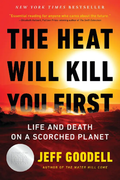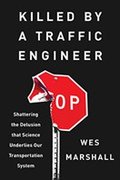Book Group Bookshelf
OAPA'S Planners Book Group gathers periodically to discuss books relevant to planners and planning practice. This reading list includes selections from the Group's prior meetings.

The Heat Will Kill You First: Life and Death on a Scorched Planet

Killed by a Traffic Engineer: Shattering the Delusion that Science Underlies our Transportation System

The Death and Life of Great American Cities by Jane Jacobs

Dream Play Build by James Rojas and John Kamp

Indians, Fire, and the Land in the Pacific Northwest edited by Robert T. Boyd

Climate Resilience for an Aging Nation by Danielle Arigoni

Urban Forests by Jill Jonnes

Oregon Plans: The Making of an Unquiet Land-Use Revolution by Sy Adler

Arbitrary Lines: How Zoning Broke the American City by M. Nolan Gray

Homelessness is a Housing Problem by Greg Colburn and Clayton Page Aldern

Breaking Ground: The Lower Elwha Klallam Tribe by Lynda V. Mapes

Pushed Out: Contested Development and Rural Gentrification in the US West by Ryanne Pilgeram

Recast Your City: How to Save Your Downtown with Small-scale Manufacturing by Ilana Preuss

Building the Cycling City: The Dutch Blueprint for Urban Vitality, by Melissa & Chris Bruntlett

Using Drones in Planning Practice by Ric Stephens, Rob Dannenberg, Wendle Kellington, and Patrick Sherman

Right of Way: Race, Class, and the Silent Epidemic of Pedestrian Deaths in America by Angie Schmitt

Neighborhood Defenders: Participatory Politics and America’s Housing Crisis by Katherine Levine Einstein, David M. Glick, and Maxwell Palmer

From Mobility to Accessibility: Transforming Urban Transportation and Land-Use Planning by Jonathan Levine, Joe Grengs, and Louis A. Merlin

Invisible Women: Data Bias in a World Designed for Men by Caroline Criado Perez

The Big Ones: How Natural Disasters Have Shaped Us (and What We Can Do About Them) by Lucy Jones

Zoned in the USA: The Origins and Implications of American Land-Use Regulation by Sonia Hirt

The Future of the Past: A Conservation Ethic for Architecture, Urbanism, and Historic Preservation by Steen W. Semes

Parking and the City by Donald Shoup

Palaces for the People: How Social Infrastructure Can Help Fight Inequality, Polarization, and the Decline of Civic Life by Eric Klinenberg

The Color of Law: A Forgotten History of How Our Government Segregated America by Richard Rothstein

The High Cost of Free Parking by Donald Shoup

A Better Way to Zone: Ten Principles to Create More Livable Cities by Donald L. Elliott

Urbanism in the Age of Climate Change by Peter Calthorpe

Walkable City: How Downtown Can Save America, One Step at a Time by Jeff Speck

Planning Paradise: Politics and Visioning of Land Use in Oregon by Peter Walker & Patrick Hurley
For More Information
Contact Laura Buhl, AICP, for more information on the OAPA Planners Book Group.

